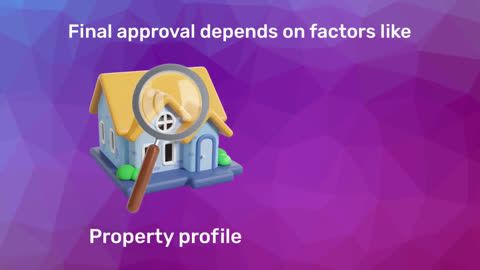How much rental income is taxable?
Rental income can be a lucrative source of revenue, but it is important to understand how much of it is taxable to ensure compliance with tax regulations and avoid unexpected liabilities. In India, rental income falls under the category of income from house property, which is subject to tax under Section 22 of the Income Tax Act, 1961. Understanding what constitutes taxable rental income and the various exemptions and deductions available can help you manage your tax liabilities effectively.When calculating taxable rental income, the gross rental income earned from your property is the starting point. This includes all amounts received as rent from tenants. However, the Income Tax Act allows for certain deductions and exemptions that can reduce the amount of taxable income. For instance, the annual value of the property, which is the rent received or receivable, minus municipal taxes paid, is considered for tax purposes.
Additionally, if you have taken a home loan to purchase or construct the property, the interest on this loan can be claimed as a deduction under Section 24(b). This can significantly reduce your taxable rental income. It is crucial to keep accurate records of all rental transactions and deductions to ensure accurate tax reporting and compliance.
Key factors affecting taxable rental income
Several factors can influence the amount of rental income that is taxable. Here are some key considerations:
1. Gross rental income: The total amount received from tenants is the gross rental income, which forms the basis of your taxable income.
2. Municipal taxes paid: Taxes paid to local authorities on the property are deductible from the gross rental income when calculating taxable rental income.
3. Interest on home loan: If you have taken a home loan for the property, the interest paid is deductible under Section 24(b) of the Income Tax Act, which can reduce your taxable rental income.
4. Property depreciation: Depreciation on the property is not directly deductible, but it can affect the overall valuation and future capital gains tax implications.
5. Repairs and maintenance: Expenses incurred for repairs and maintenance of the property are generally allowed as deductions, which can reduce the taxable rental income.
6. Vacancy periods: If the property remains vacant for a part of the year, the income for that period is not taxable. However, the property’s potential rent is considered while calculating the annual value.
Understanding these factors is essential for accurate tax reporting and financial planning. For property owners with a home loan, managing these aspects effectively can also impact the overall cost of ownership and investment returns.
Exemptions and deductions for rental income
The Income Tax Act provides several exemptions and deductions to help reduce taxable rental income. One of the key benefits is the standard deduction, which allows property owners to claim 30% of the annual value of the property under Section 24(a), covering expenses like repairs, maintenance, and depreciation. Additionally, interest on a home loan can be deducted under Section 24(b), with a maximum deduction of Rs. 2 lakh per annum for self-occupied properties.For let-out properties, there is no upper limit on the deduction for interest paid. Another important deduction is for municipal taxes, which can be subtracted from the gross rental income, reducing the overall taxable amount. If your property remains vacant for part of the year, exemptions on the vacancy period ensure that the income for the vacant period is not taxable, although the property’s annual value is still considered. Lastly, while major repairs are not deductible, routine repairs and maintenance expenses are generally covered under the standard deduction. Maintaining accurate records of these expenses is crucial for ensuring correct tax reporting and maximising available tax benefits. For property owners with a home loan, utilising these deductions can significantly lower taxable rental income and enhance tax efficiency.
How to calculate taxable rental income in India?
Calculating taxable rental income involves several steps to ensure compliance with tax regulations. Here is a step-by-step guide:1. Determine gross rental income: Start by calculating the total rental income received from tenants during the financial year.
2. Subtract municipal taxes: Deduct the municipal taxes paid on the property from the gross rental income.
3. Apply standard deduction: Calculate the standard deduction of 30% of the annual value of the property. This deduction is available irrespective of actual expenses incurred.
4. Claim home loan interest deduction: If applicable, deduct the interest paid on your home loan under Section 24(b). For self-occupied properties, the maximum deduction is Rs. 2 lakh, while for let-out properties, there is no upper limit.
5. Account for vacancy periods: Adjust for any periods during which the property was vacant. The income for these periods is not taxable, but the annual value of the property is still considered.
6. Compute net taxable rental income: Subtract all applicable deductions from the gross rental income to determine your net taxable rental income.
By following these steps and keeping accurate records, you can ensure that your rental income is correctly reported and optimised for tax purposes. For property owners with home loans, understanding and applying these calculations effectively can also impact your overall tax strategy and financial planning.
Explore Bajaj Housing Finance Home Loan
If you are considering a home loan, Bajaj Housing Finance Home Loan could be the perfect solution. With competitive interest rates and flexible options such as part-prepayment, balance transfer, and top-up loans, Bajaj Housing Finance empowers you to manage your loan efficiently while keeping your financial commitments under control.Here are the benefits of choosing Bajaj Housing Finance Home Loan
1. Attractive interest rates: Benefit from attractive interest rates that make owning a home more affordable.
2. Long repayment tenure: Select a repayment period that fits your financial situation, ensuring smooth loan management.
3. Quick disbursal: Enjoy a fast and hassle-free loan approval and disbursal process, allowing you to move into your new home sooner.
4. Minimal documentation: The easy and streamlined documentation process simplifies the loan application, making it more convenient for you.
With Bajaj Housing Finance, financing your dream home becomes effortless. Apply now and experience a home loan process tailored to meet your needs, with ease and convenience.




